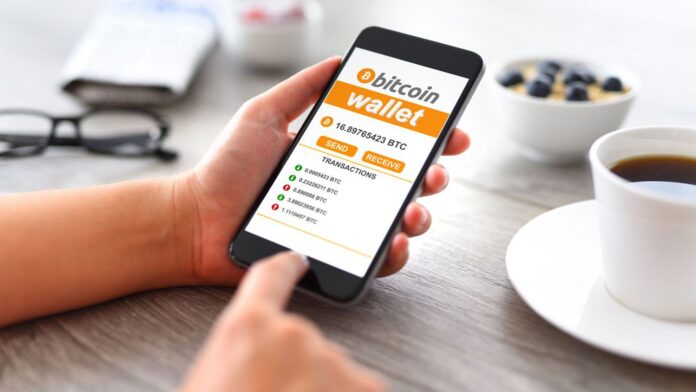
Have you ever wondered what exactly is a Crypto Wallet? Well, this article today will tell you all about cold crypto wallets suited for traders and help you figure out what are they and what do you need to use them for.
To start as simple as possible a crypto wallet is something you need to access the blockchain network. There are several types of these wallets but today we will list interesting facts for so-called Cold Wallets that are used by traders.
There are many out there and you have to be careful with these. You have to watch out how you used them and where you use them. With cryptocurrencies and their wallets, everything revolves around safety. Cryptocurrency is specific in its way and since it is decentralized there is no one to help you in a case like theft, loss of your private key or keys, hacking, and so on. You have to be on your toes with this, and we mean all the time.
After this intro, you still wonder how they work, well ask no more because we and the-bitcoin-benefit-pro.com/login have an answer for you, just keep reading.
Bitcoin wallet is a tool that is used to send, receive, store and monitor balances of Bitcoin. It works like any other program such as your email client that allows you to receive, send, and check for new messages whenever you need to. The way that wallets do this is by interfacing with the blockchain and monitoring Bitcoin addresses in that blockchain. With monitoring, the wallets also update their balance with each transaction which is a feature we value the most. Now, there are three types of wallets and each one is interesting in its way.
1. Desktop wallet

This is problematic but a very safe type of wallet. Why? Well, keep reading and you will understand why. To do this quickly and successfully you will need a PC of course, but it will need a high capacity SSD or M.2 if possible. HDDs won’t do the job here at all so don’t even try it. Since this method or, this type of wallet demands downloading the entire transaction history the HDD as the slowest of the bunch simply won’t cut it. Since we are talking about bitcoin you will have to download the Bitcoin Core which at its start didn’t go over 1GB in space but since the beginning, a lot of things happened and to this day the database grew to a whopping 330GB. But there is a neat trick that you can do to save your space on the disk – you can choose a setting that will allow you to override only 4 GBs multiple times. This means as soon as you download 4GBs they will be overridden with the next 4 and so on until your Bitcoin Core goes over the entire chain but not taking up all the space it needs. After that, the platform is virtually done and your wallet is in a folder with a piece of data called wallet.dat. Here is where your address is and here is where your balance resides. With this, you are pretty much done and you can send and receive Bitcoin as you please. Just keep that wallet.dat file safe and if possible encrypt it to keep it as safe as possible.
2. Online wallets

This option is considered to be a simple but unsafe solution. This is based on any other online registration site. If you ever registered for anything then you will know how to do this and what this is all about. The idea is that a particular service, or a third party, takes all the storage duties for your crypto balance while taking a tiny fee for transactions. What you have to do is find a respectful and safe service and input your data to register. After that, you will have an address with a wallet. Simple isn’t it?! Yes, and there are pitfalls to this since you can have good and simple altogether. In the first method, you own your wallet and nobody else. Here the wallet isn’t yours but it belongs to the service you chose, and you play the role of your wallet manager. If there is a breach in the service and hackers steal all the info, or the owners of services decide to call it quits and drive to a mysterious and remote island it is by-by to you and everyone else who used their services. You will never see anything of it – ever again. What these online wallets come down to is small transactions, trading, and quick day-to-day access. WE and everyone else will highly recommend that you never store huge amounts of any crypto here and use online wallets as crypto storage.
3. Hardware wallet

Now, these are both convenient and secure, but they come at a cost. A hardware wallet will include a thing that looks like a USB stick or anything similar to it. It is a physical data storage device that is secured like Fort Knox itself. You will have the device secured by a PIN primarily, which means that no transaction can take place if you don’t know the PIN for the device. Second important thing is that you keep the private key for this thing by yourself. You will receive a randomly generated string of words or characters which will confirm the ownership of the wallet. It should go without saying but keep this key safe and keep it off the internet. If you lose it or it gets stolen it’s by-by to your coin stash. It also looks like an online wallet but the funny thing is that you don’t have to register. All you need is to activate it, get your private key, set the PIN code and you are ready to download any crypto your hardware key supports. If you by some chance lose this wallet you can always get a new one, enter the private key you got from the old one and all your assets will be available instantly.
Bitcoins are the rage and the integral part of having or owning Bitcoins are these wallets. We hope you learned something new, or even freshen up on your prior knowledge that you will use the best you can in your future crypto dealings. Best of luck and happy mining.







